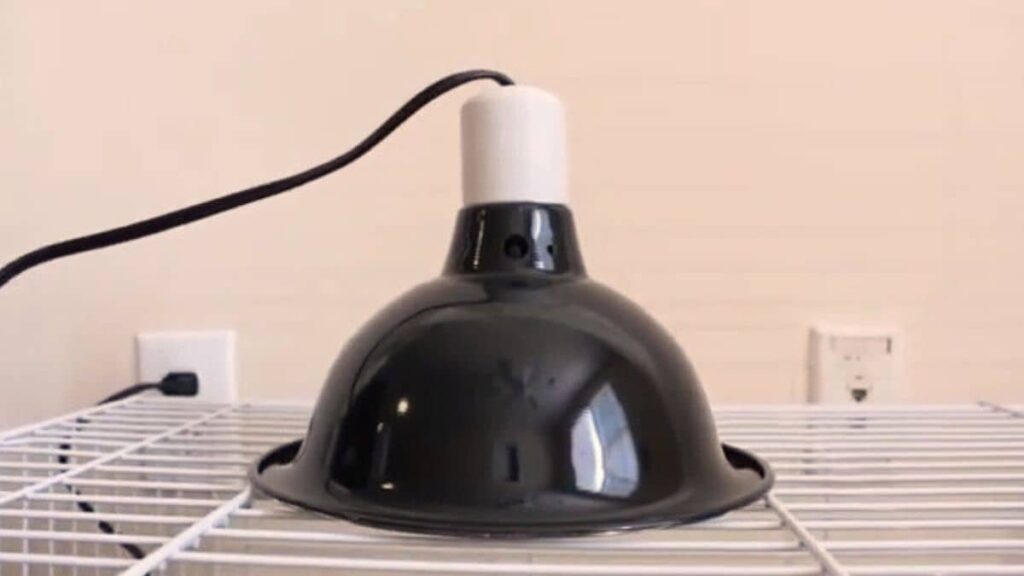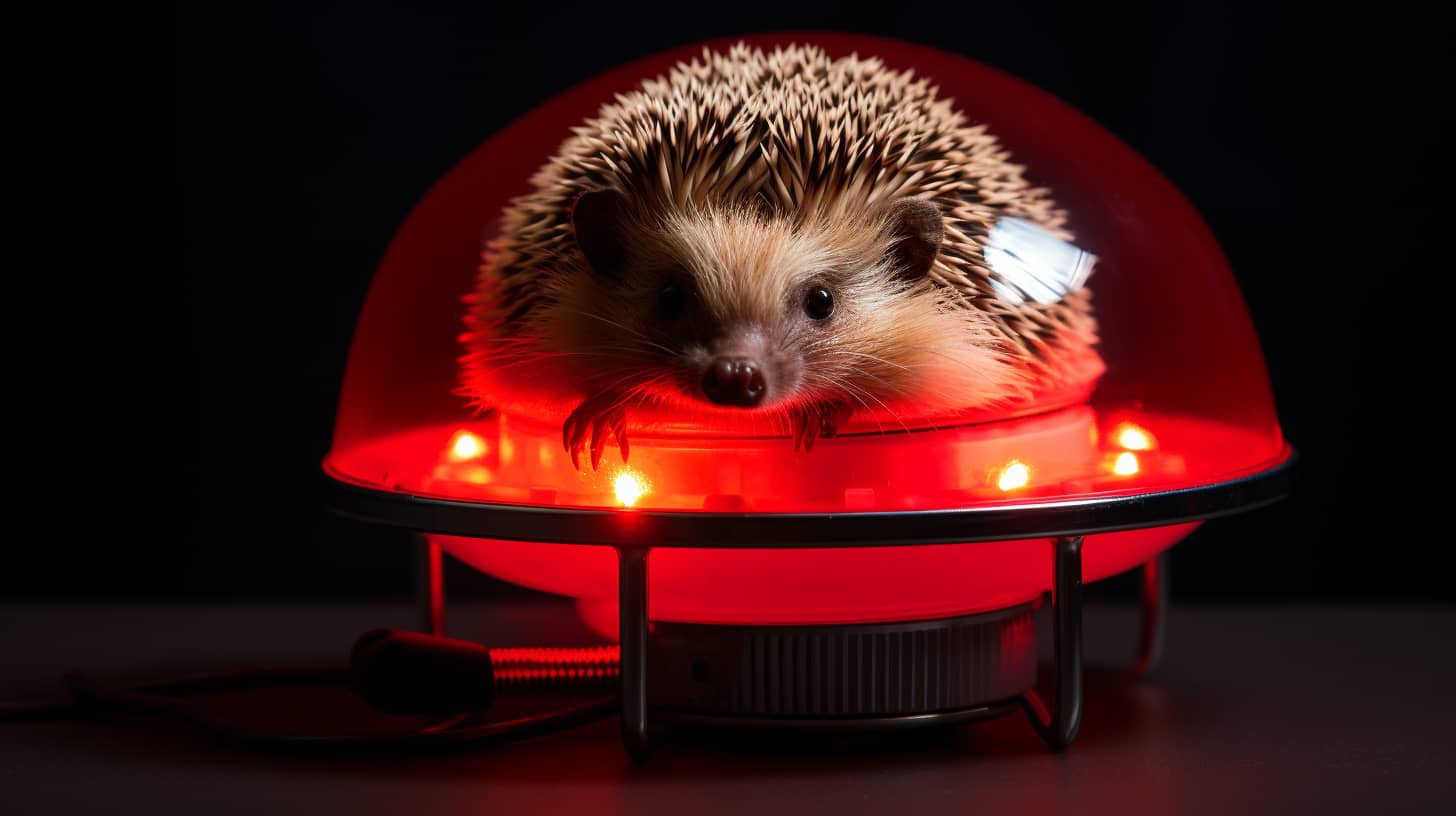Caring for a pet hedgehog involves more than love and attention; it’s also about ensuring their safe and comfortable environment. Many owners wonder if the cozy critters need an extra heat source, especially during colder months.
This article takes you through the ins and outs of maintaining the perfect temperature for your spiky pal so they stay healthy and content. We’ve got some warm tips that’ll take the chill out of hedgehog care – read on to keep your little friend happy! Keep snug, little hedgie!
Why Do Hedgehogs Need Heat?

Hedgehogs need heat to prevent hibernation attempts, maintain proper body temperature, and promote good health. This is essential for their thermoregulation and overall well-being.
1. Prevent hibernation attempts
Hedgehogs need warmth to stay healthy. Cold weather can make them try to hibernate. This is bad for them and could even be deadly. Owners must keep the cage warm enough, especially when it gets colder outside.
Keeping hedgehogs in a place with steady heat stops these dangerous sleep attempts. Make sure they get some sunlight too, because short days can lead to unwanted hibernation efforts.
Watch out for signs they might be trying to hibernate, like being less active or eating less. If you see these signs, you must warm up their space immediately.
2. Maintain proper body temperature.
Hedgehogs need extra help to keep their body temperature just right. Think of them like tiny heat-seekers who need a warm spot to thrive. Without the warmth they need, these little creatures might try to hibernate, which is risky for pet hedgehogs and can lead to health problems.
Their cages should stay cozy, between 73-78 degrees Fahrenheit, so they feel at home and stay healthy.
To ensure your spiky friend stays warm enough, don’t rely on room temperature alone—it’s insufficient. Use heating pads or ceramic heat emitters that let you control the heat with thermostats.
This ensures your hedgehog’s core body temperature remains stable and keeps them from overheating or getting too chilly.
3. Promote good health
Keeping hedgehogs warm is key for their well-being. Without enough heat, these little creatures can’t fight off sickness. A stable temperature keeps their immune system strong and their body functioning right.
Heat lamps play a vital role in this process by providing consistent warmth.
Proper heat prevents unwanted hibernation attempts that are risky for pet hedgehogs. In the wild, hedgehogs might hibernate to survive cold spells. But pet hedgehogs don’t have the fat reserves to make it through safely.
That’s why heating is not just about comfort; it’s about keeping them alive and healthy.
What wattage heat lamp for hedgehog?

Selecting the right wattage for your hedgehog’s heat lamp depends on various factors, including room temperature, cage size, and the lamp’s distance from the cage floor. Generally, options ranging from 60 to 150 watts are suitable.
For most situations, a 100-watt lamp should suffice. However, if you have a larger cage, around 100 gallons in size, opting for a 150-watt lamp is advisable for better heating coverage.
To summarize, a ceramic heat emitter with a wattage between 100 and 150 is recommended for maintaining the warmth of your hedgehog’s cage.
The Best Heating Options for Hedgehogs
Consider using ceramic heat emitters, heating pads, and insulated cages to ensure the proper temperature for your hedgehog. Monitoring the temperature with a thermometer and humidity gauge is also crucial for maintaining their well-being.
Ceramic heat emitters
Ceramic heat emitters are the top choice for heating hedgehog enclosures as they do not emit light, providing a natural day and night cycle. This type of heater is considered the safest and least expensive method to maintain an optimal temperature in a hedgehog’s habitat.
Due to their safety and effectiveness, ceramic heat emitters are preferred over traditional heat lamps when creating a comfortable hedgehog environment.
These devices offer consistent warmth without disrupting the hedgehog’s sleep patterns or causing discomfort from bright light exposure. It’s important to note that ceramic heat emitters are widely recommended by experts for maintaining a suitable temperature in hedgehog habitats, allowing these pets to thrive in a cozy and safe home environment while avoiding potential health risks associated with improper heating methods.
Heating pads
Heating pads are not recommended for hedgehogs due to their limited effectiveness for many species. Instead, consider using microwave heating discs like Snugglesafe pet beds, which provide a cost-effective and safe alternative option costing around $25.
These heating discs offer a reliable source of warmth without the potential risks associated with traditional heating pads, ensuring your hedgehog stays comfortable and healthy.
Using alternative methods, such as microwave heating discs, can help you avoid potential issues related to regular heating pads, providing a safer and more efficient way to keep your hedgehog warm.
Insulated cages
Insulated cages are essential for creating a stable and warm environment for hedgehogs. They help maintain the proper temperature range of 72-78°F within the enclosure, shielding hedgehogs from potential hibernation attempts caused by fluctuating temperatures.
Using insulated cages, hedgehog owners can ensure that their pets stay warm and healthy without needing a traditional heat lamp.
To keep your hedgehog comfortable and safe, consider investing in an insulated cage as a reliable heating option. This will help prevent temperature fluctuations that could lead to health issues or hibernation attempts.
Monitoring temperature with thermometer and humidity gauge
Use a thermometer with a humidity display to keep track of the temperature and moisture levels in your hedgehog’s cage. This helps ensure they stay within the optimal range for their health.
Temperature control is crucial as hedgehogs need warmth to prevent hibernation attempts, and proper humidity levels also support their well-being.
Ensure that the thermometer has humidity percentage displayed on it; this is essential for monitoring the temperature and humidity levels in your pet’s habitat. Maintaining these conditions within suitable ranges will greatly contribute to your hedgehog’s health and comfort.
How to Keep Hedgehogs Warm Without a Heat Lamp
You can use alternative heating sources such as heating pads or insulated cages to keep hedgehogs warm without a heat lamp.
Providing proper bedding material and limiting drafts in their living environment is also necessary for added warmth.
Use of alternative heating sources
Alternative heating sources come in handy when it comes to keeping hedgehogs warm without a heat lamp. Snugglesafe pet bed microwave heating discs and ceramic heat emitters are great options for maintaining the right temperature in hedgehog cages.
These alternatives provide reliable warmth, ensuring your hedgehog stays cozy and healthy.
Using cozy bedding, blocking drafts, and adding hand warmers nearby can help keep hedgehogs warm without a heat lamp.
Proper bedding material
The proper bedding material for hedgehogs plays a crucial role in maintaining their warmth. Acceptable options include shredded paper, newspaper, recycled pelleted/absorbable material, and wood shavings such as aspen or untreated pine.
These materials help create a cozy environment that helps hedgehogs regulate their body temperature without relying solely on a heat lamp. Carefully choosing the right bedding contributes to their comfort and overall well-being, ensuring they stay warm and content in their habitat.
To maintain warmth without a heat lamp, using suitable bedding is essential. Hedgehogs benefit from the insulating properties of these materials to stay cozy and comfortable, reducing the need for additional heating sources.
Limiting drafts
To keep hedgehogs warm without a heat lamp, limiting drafts in their environment is crucial. Drafty spaces can cause temperature fluctuations and make it challenging for heating systems to maintain a consistent temperature.
Blocking any drafts with insulating materials or moving the cage to a draft-free area can help ensure your hedgehog stays cozy and comfortable.
Keeping drafts at bay is essential as it helps prevent sudden temperature drops, which could negatively impact your hedgehog’s health. This simple step allows you to create a more stable and comfortable living environment for your prickly friend.
Preparing for Power Outages and Other Emergencies
During power outages or emergencies, it’s important to have backup heating solutions for your hedgehog. This could include alternative heat sources like hot water bottles and insulated blankets and steps to take during a power outage to ensure their safety and warmth.
Backup heating solutions
In case of power outages:
- Have a backup plan to keep your hedgehog warm.
- Consider using hot water bottles or microwaveable heating pads as alternative heat sources.
- Monitor the temperature in their cage and provide extra bedding for insulation.
Avoid using space heaters, which could pose a fire hazard.
Steps to take during a power outage
Keep hedgehogs warm by heating water and placing it in bottles inside a cooler. Use hand warmers to ensure hedgehogs stay cozy for hours or even days during power outages.
Always have a backup plan for heat, and consider consulting with an expert to determine the right wattage heat lamp needed for your hedgehog’s well-being.
Final Thoughts
In conclusion, hedgehogs do need a heat lamp to maintain their health. Keeping them warm prevents hibernation attempts and ensures their body temperature stays just right. Owners can ensure their hedgehog stays comfortable by using the best heating options and preparing for emergencies.
FAQs
- Why do hedgehogs need a heat lamp?
Hedgehogs require warmth, as they can’t handle cold well. A ceramic heat emitter (CHE) attached to a thermostat keeps their cage cozy, without the light that could mess up their sleep cycles.
- What if there’s a power outage? Will my hedgehog be okay?
If the power goes out, your little friend needs a backup plan for warmth – think about safe, warm hideaways or temporary heating solutions. Always have a game plan ready!
- How do I check if my hedgehog is warm enough?
You’ve got this – use digital thermometers for accurate temperature monitoring in your pet’s home! Keep an eye on those numbers; too low and it’s time to crank up the thermostat.




